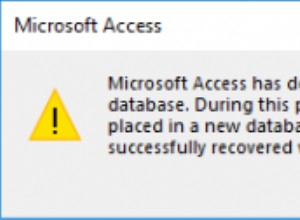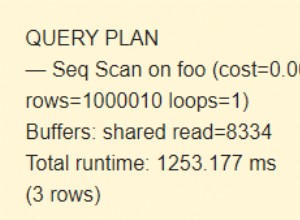Rozszerzając odpowiedź na to pytanie:zapytanie dotyczące dystrybucji płatności Oracle sql
Nadal możesz używać SQL MODEL klauzula. W tej wersji potrzebujesz oddzielnych obliczeń dla każdego odrębnego account_num . Możesz to osiągnąć za pomocą PARTITION słowo kluczowe SQL MODEL klauzula partycji według account_num .
W ten sposób (patrz komentarze SQL, aby uzyskać wyjaśnienie krok po kroku):
-- Set up test data (since I don't have your table)
WITH inv_raw (item_order, inv_amount, partial_pmt_allowed, account_num, cr_amt) AS (
SELECT 1, 1256, 'Y', 12, 1000 FROM DUAL UNION ALL
SELECT 2, 1134, 'Y', 12, 1000 FROM DUAL UNION ALL
SELECT 3, 800, 'Y', 13, 1200 FROM DUAL UNION ALL
SELECT 4, 200, 'N',13, 1200 FROM DUAL UNION ALL
SELECT 5, 156, 'N',13, 1200 FROM DUAL),
-- Ensure that the column we are ordering by is densely populated
inv_dense (dense_item_order, item_order, inv_amount, partial_pmt_allowed, account_num, cr_amt) AS
( SELECT DENSE_RANK() OVER ( PARTITION BY account_num ORDER BY item_order ), item_order, inv_amount, partial_pmt_allowed, account_num, cr_amt FROM inv_raw )
-- Give us a way to input the payment amount
--param AS ( SELECT 1100 p_payment_amount FROM DUAL )
-- The actual query starts here
SELECT
account_num,
item_order,
inv_amount,
partial_pmt_allowed,
applied dist_amount,
remaining_out balance_amt,
cr_amt
FROM inv_dense
MODEL
-- We want a completely separate calculation for each distinct account_num
PARTITION BY ( account_num )
-- We'll output one row for each value of dense_item_order.
-- We made item_order "dense" so we can do things like CV()-1 to get the
-- previous row's values.
DIMENSION BY ( dense_item_order )
MEASURES ( cr_amt, item_order, inv_amount,
partial_pmt_allowed, 0 applied,
0 remaining_in, 0 remaining_out )
RULES AUTOMATIC ORDER (
-- The amount carried into the first row is the payment amount
remaining_in[1] = cr_amt[1],
-- The amount carried into subsequent rows is the amount we carried out of the prior row
remaining_in[dense_item_order > 1] = remaining_out[CV()-1],
-- The amount applied depends on whether the amount remaining can cover the invoice
-- and whether partial payments are allowed
applied[ANY] = CASE WHEN remaining_in[CV()] >= inv_amount[CV()] OR partial_pmt_allowed[CV()] = 'Y' THEN LEAST(inv_amount[CV()], remaining_in[CV()]) ELSE 0 END,
-- The amount we carry out is the amount we brought in minus what we applied
remaining_out[ANY] = remaining_in[CV()] - applied[CV()]
)
ORDER BY account_num, item_order;




